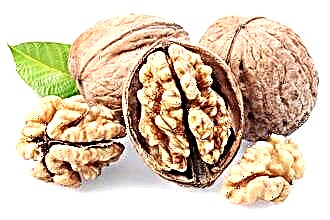Let's talk about a condition that pediatricians and cardiologists attribute to minor anomalies in the development of the heart, and some authors propose to distinguish it as an independent situation that has clinical significance. Today we will understand in detail what an additional notochord of the left ventricle (LVDC) is, what are the causes of its development, symptoms and diagnostic methods. We will also touch on the topic of danger, complications and indications for treatment.
What is a chord: location and function
For the normal functioning of the heart, it is important that during the period of ventricular systole, the communication with the atria is completely blocked. This is provided by two valves:
- right tricuspid;
- left (also called mitral) - bicuspid.

Fleshy trabeculae are attached to the valve cusps, as well as tendon chords (cords, heart strings)formed by dense connective tissue and extending from the papillary muscles. These structures are "invented" by nature in order to hold the valve cusps:
- when the strands contract, the valves open;
- at the moment of relaxation of the strings, the valves close tightly, creating an obstacle for blood to enter the atria.
Sometimes during intrauterine development, additional, "extra" fibers are formed. They can be found both on the right and on the left, but in 90% of cases the left ventricle suffers. If such a string goes from the papillary muscles to the walls of the heart or sags freely, cardiologists call it a pseudo-chord of the left ventricle (LVH). If it is directed from one wall of the ventricle to the other, then such a fiber is called an abnormal cord (LVAT).

LVDC differs from the mitral support string:
- smaller length and thickness;
- structural organization.
Normal, typical fiber is characterized by one central core, in which up to 5 main blood vessels pass. The pseudo-chord of the left ventricle is formed by 2 - 3 rods, separated by connective tissue, inside which are the vessels of the microvasculature.
You can also find the following wording - "additional trabecula of the left ventricle." Often, doctors mean LVDC, although, from an anatomical point of view, the trabecula is a separate structure that continues the cordial cord.
In the English-language medical literature, the term falshe-chordae - "false chord" is used. Some authors recommend replacing the literal translation with the "ectopically attached notochord", as it more accurately reflects the essence of the changes.
The reasons for the development of the anomaly
The main etiological factor in the occurrence of such an anomaly as an additional notochord in the heart of a child is a genetic predisposition. The risk increases in the presence of cardiac pathology in the mother. But experts do not exclude other reasons for the development of small heart anomalies:
- drinking alcoholic beverages;
- smoking;
- viral and bacterial infections;
- stress;
- excessive physical activity;
- malnutrition;
- environmental pollution;
- radiation.
Connective tissue anomaly is closely related to its dysplasia. The formation of the fetal cardiovascular system ends by the eighth week of intrauterine development. Obstetricians-gynecologists know that the blood of an unborn child circulates on its own already on the 26th day of pregnancy, heart valves are formed at 6 weeks, therefore, it is in the first trimester that a woman should especially beware of adverse effects.
Symptoms and indications for a visit to the doctor
Pediatric cardiologists divide LVCLD into hemodynamically significant ones and those that do not affect health and quality of life. In the overwhelming majority of cases, parents are unaware of the existing anomaly - the child is developing absolutely normally.
The LVH clinic has no specific symptoms. Sometimes even in the neonatal period, a noise is diagnosed - an acoustic phenomenon in the form of a whistle, a squeak, which the doctor hears when listening to the heart. The murmur is caused by the sound of vortexes during the advancement of blood in the left ventricle or vibration of an additional cord of the heart.
The manifestation of LVAC is determined by its intracardiac topography and the period of a person's life. During the so-called growth shocks, when there is an increased increase in body length, children have complaints about:
- excessive fatigue;
- unmotivated fatigue;
- pallor of the skin;
- periodic heart palpitations;
- pain in the projection area of the apex of the heart;
- feeling of lack of air.
Electrocardiographic examination can reveal the presence of extrasystoles, conduction disturbances, signs of left ventricular myocardial hypertrophy. If the occurrence of a minor cardiac anomaly is due to connective tissue dysplasia syndrome, LV DC is accompanied by the following symptoms:
- asthenic physique;
- low body mass index;
- joint hypermobility;
- history of dislocation;
- deformation of the bones of the chest;
- violation of posture;
- structural changes in internal organs.
LVDH symptoms often appear during adolescence. At the same time, parents may associate the teenager's complaints with the difficulties of the school curriculum, overwork with tutoring, overload in the sports section, and long sitting at the computer.
Diagnostics: how to determine LVH
When the doctor tells you that your child is having a heart murmur, there is no reason to panic. The condition does not require urgent resuscitation and intensive treatment. The main diagnostic method is ultrasound examination. It will help to clarify the location and the number of additional strands. There are the following types of LCVD:
- at the location in the ventricle - apical, middle, basal;
- in relation to the axis of the heart - diagonal, longitudinal, transverse;
- by number - single and multiple.

If an additional chord was detected in the cavity of the left ventricle in a baby of any age using echocardiography, I advise parents to undergo the following examinations:
- General blood analysis in terms of diagnosing LVH, it does not matter, but it will reveal anemia or an existing inflammatory process in the body, which can aggravate the condition of a child with a minor heart anomaly.
- Electrocardiography. It is desirable to conduct Holter monitoring, which will allow to exclude arrhythmia with greater diagnostic accuracy.
- Exercise ECG tests will show how the child's heart "copes" with its function.
- Consultations of narrow specialists (orthopedist, endocrinologist, otolaryngologist).
I always explain to the parents of babies that sometimes the abnormal chord can lengthen and "grow" into the valve, therefore, during subsequent ultrasound, the doctor does not detect LVDC. In such cases, they say that the baby has "outgrown" this pathology.
Doctor's advice: how often to do echocardiography for false chord
For a standard check-up with a minor heart anomaly, it is enough to undergo an EchoCG once a year. The survey is appointed unscheduled if:
- the patient has complaints, including those that are not directly related to cardiology;
- you notice that the child is growing rapidly;
- there was a sharp decrease in weight;
- diagnosed with a chronic disease, such as asthma, gastritis, nephritis;
- the child goes to kindergarten, school, university;
- there is a question about the sports section;
- there was stress: an exam, the loss of one of the family members, a conflict in the children's team and at home;
- pregnancy is planned or determined.
Single LVH is not considered a pathology. Experts consider them as an anatomical feature of a person. The presence of an additional chord is not a contraindication to attending physical education lessons. Young men with abnormal straps can be drafted into the army if they do not have complications and concomitant pathology. It is only important to tell the child about his condition in an accessible way and warn him that he needs to be attentive to his health.
What complications can occur with a false chord
The prognosis for single abnormal chords is favorable. Complications are rare, but multiple transverse and diagonal chords can act as a trigger for the development of diastolic dysfunction of the heart, increasing the risk of thrombus formation, bacterial endocarditis, and also be combined with other congenital anomalies.
Sometimes LVH can cause:
- extrasystoles;
- paroxysmal ventricular tachycardia;
- WPW syndrome;
- atrial fibrillation;
- TELA;
- thrombotic lesions of the veins;
- ischemic stroke;
- cardiac arrest.
These disorders occur in adulthood, but an adolescent with LVDH should be informed about them. An unfavorable prognosis is characteristic only of the syndrome of non-compact left ventricular myocardium (LVM), which is characterized by the presence of numerous additional trabeculae and chords, combined with changes in the structure of the heart muscle.
Despite these complications, statistics assert: repeated clinical observations have not revealed a relationship between the presence of additional strands in the left ventricle and the risk of cardiovascular mortality.
Treatment
As a rule, single LVDH without clinical manifestations does not require treatment. Medicines are prescribed for the development of complications and concomitant heart disease. Symptomatic therapy - antiarrhythmic agents and substances that correct hemodynamics: diuretics, hypotensive, antioxidant, potassium and magnesium preparations.
Surgical methods of treatment (local cryodestruction and excision of the left ventricular ventricle) are rarely used: if an abnormal cord is the cause of arrhythmia, which is a threat to the patient's life.
Lifestyle recommendations:
- give up fast food and sugary carbonated drinks;
- stay in the fresh air for at least an hour a day;
- do not sit up at the computer;
- find time for exercise in your personal schedule;
- learn to resist stress;
- timely vaccinated against influenza and other infectious diseases;
It is imperative to discuss the issue of "bad habits" with the teenager. It is important that a young person consciously considers it unacceptable for himself to take a sip of a low-alcohol drink or inhale cigarette smoke.
Pregnancy is not contraindicated for women with LVDH. It does not pose a threat to health, passes without negative consequences for the mother and child, you just need to notify the doctor about the additional chord available.
Prevention methods: is there something special
There is no specific prophylaxis for LVDH. A person with a single ectopically located notochord can lead an active life. In the absence of complications and hemodynamic disturbances, there are no restrictions on the choice of profession.



